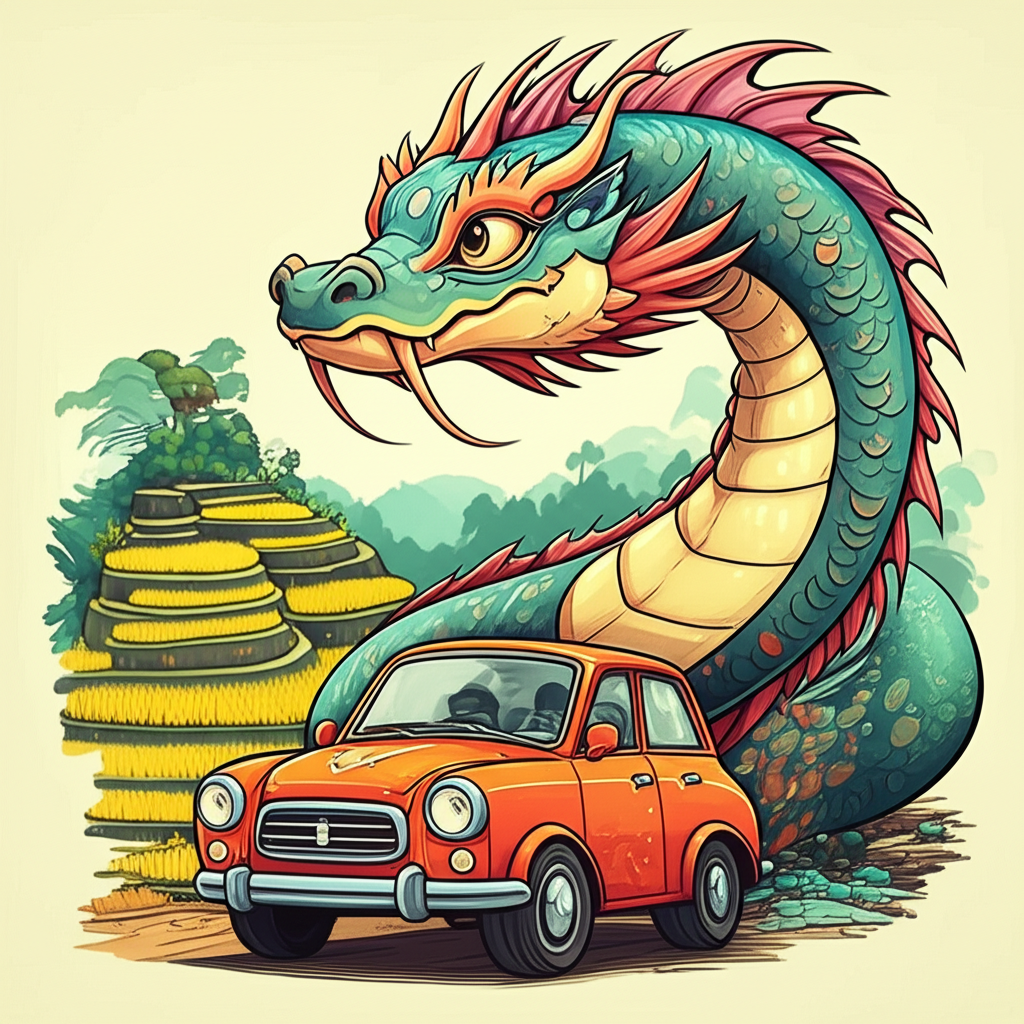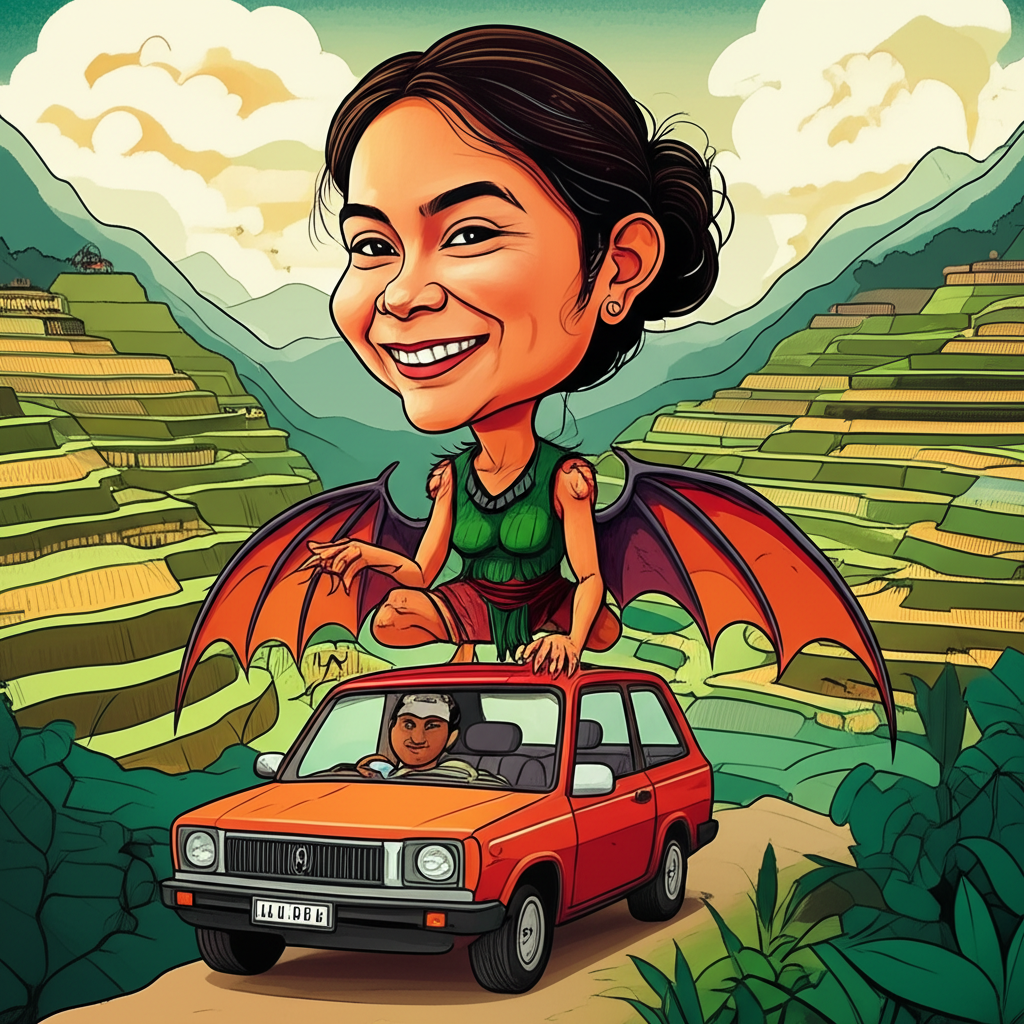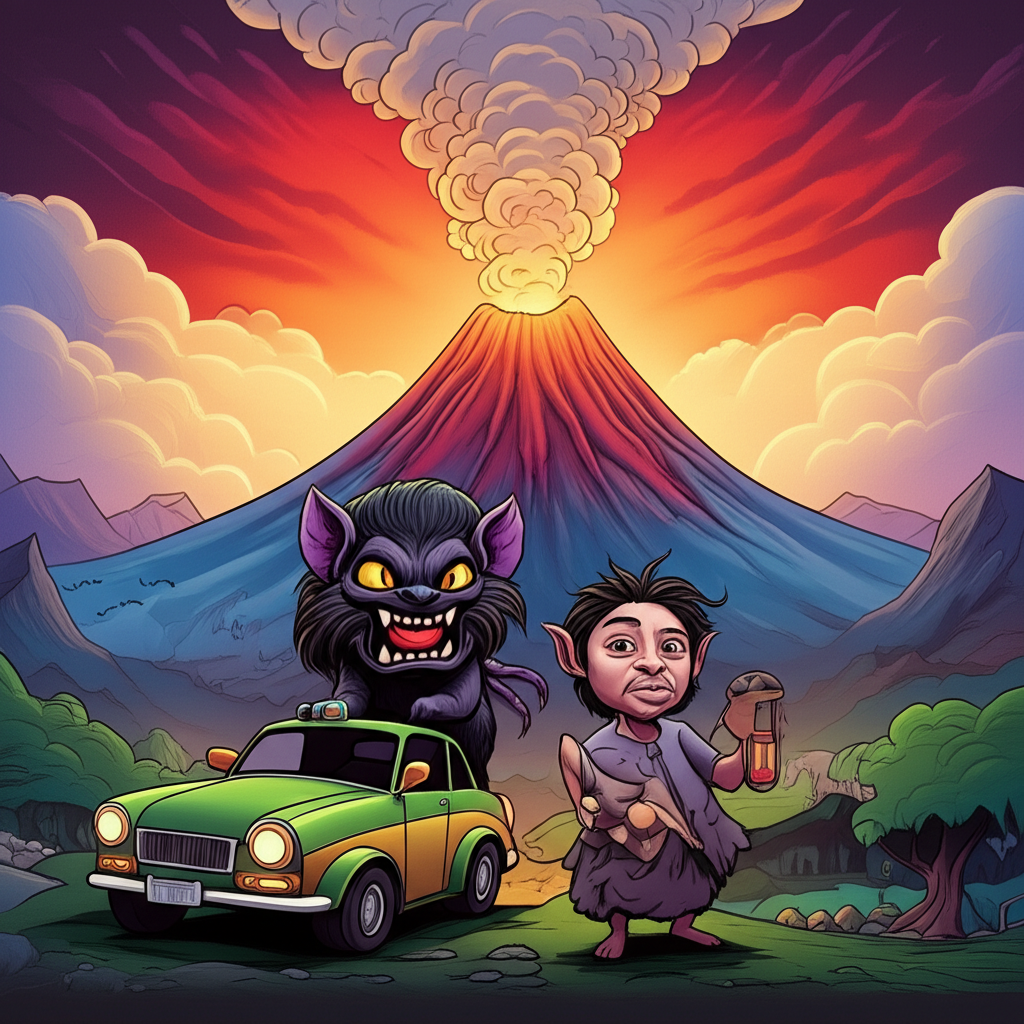
Introduction:
From the rich tapestry of Philippine folklore, woven with threads of animism, ancestor worship, and a deep connection to the natural world, comes a compelling story that intertwines the supreme god Bathala, the monstrous Bakunawa, and the awe-inspiring Ifugao Rice Terraces. This is not a tale of factual events or divine truths, but a traditional story passed down through generations by the ancient people of the Philippines, a narrative designed to explain the mysteries of the cosmos, the challenges of survival, and the enduring spirit of humankind. It is a story meant to be explored for its cultural and historical significance, a window into the worldview of our ancestors.
Origins and Cultural Background:
The myths and legends surrounding Bathala, Bakunawa, and the origins of the Ifugao Rice Terraces are rooted in the pre-colonial Philippines, a time before the arrival of Islam and Christianity. The diverse archipelago was populated by various indigenous groups, each with their own distinct languages, customs, and belief systems. These societies were largely agrarian, their lives intimately tied to the rhythms of nature. The sun, moon, stars, mountains, rivers, and forests were not merely geographical features but were imbued with spiritual significance, inhabited by deities and spirits that influenced their daily lives.
In this world, Bathala was often seen as the supreme creator god, a benevolent but distant figure who resided in the heavens. He was the ultimate authority, the source of all life and order. However, the world was not always harmonious. It was a constant struggle between forces of good and evil, order and chaos. This is where the Bakunawa enters the picture, a serpentine dragon-like creature of immense power, often associated with the darkness and the eclipses of the moon. The Ifugao people, renowned for their intricate rice terraces carved into the mountainsides, represented a people deeply connected to the land, their lives shaped by the challenges and rewards of agriculture.
Character / Creature Description:
Bathala, as the supreme god, is often depicted as an elderly man with a long white beard, residing in the highest realm of the heavens. He is the source of creation and the ultimate judge, but his direct involvement in earthly affairs is often limited. He represents order, justice, and benevolence, a celestial king overseeing the universe.
The Bakunawa, in stark contrast, is a terrifying creature, a massive sea serpent or dragon with a gaping mouth and a voracious appetite. Its scales shimmered in the dark, and its eyes glowed with an unholy light. Different tribes portrayals vary but it is commonly believed to be the cause of lunar eclipses. The Bakunawa’s symbolic attributes are readily apparent: it embodies chaos, destruction, and the unpredictable forces of nature. It is the embodiment of the fears that plagued the ancient Filipinos – the darkness, the unknown, and the constant threat of natural disasters.
The Ifugao people, although not supernatural beings, are central to the story as the embodiment of human resilience and ingenuity. Their ability to transform the rugged mountains into fertile rice terraces symbolizes their perseverance, their deep understanding of the natural world, and their unwavering commitment to survival.
Main Story / Narrative Retelling:
Long ago, in a time when the moon shone with unmatched brilliance, Bathala, the supreme god, had created seven beautiful moons to illuminate the night sky. These celestial orbs brought joy and prosperity to the land, their gentle light guiding travelers and nurturing the crops. However, deep within the ocean’s abyss, lurked the Bakunawa, a monstrous serpent consumed by insatiable hunger.
Envious of the moons’ radiant beauty, the Bakunawa began to devour them, one by one. With each moon that disappeared into its gaping maw, darkness descended upon the land, plunging the world into chaos and despair. The people cried out to Bathala for help, their prayers echoing through the mountains and valleys.
The Ifugao people, known for their unwavering determination and their intimate knowledge of the land, devised a plan to scare away the Bakunawa. They gathered together, armed with bamboo sticks, pots, and pans. As the Bakunawa attempted to swallow the last remaining moon, the Ifugao people unleashed a deafening cacophony of noise. They beat their drums, clashed their pots, and shouted at the top of their lungs, creating a terrifying din that reverberated across the land.
The Bakunawa, startled and momentarily disoriented by the sudden uproar, hesitated. The moon, partially swallowed, began to slip from its grasp. The Ifugao people continued their relentless assault of noise, driving the monstrous serpent back into the depths of the ocean. The moon, freed from the Bakunawa’s clutches, slowly returned to its full brilliance, dispelling the darkness and restoring hope to the land.
The battle against the Bakunawa was long and arduous. The Ifugao people knew that the serpent would return, driven by its insatiable hunger. To ensure their survival, they began to carve terraces into the mountainsides, creating intricate rice paddies that could sustain them even in the darkest of times. These terraces, a testament to their ingenuity and perseverance, became a symbol of their resilience, a reminder that even in the face of overwhelming adversity, they could find a way to survive and thrive.
Symbolism and Meaning:
The myth of Bathala, Bakunawa, and the Ifugao Rice Terraces is rich with symbolism. The Bakunawa represents the unpredictable forces of nature, the dangers that constantly threaten human existence. The lunar eclipses, explained as the Bakunawa attempting to swallow the moon, served as a reminder of the precarious balance between order and chaos.
The Ifugao people, in their struggle against the Bakunawa and their creation of the rice terraces, symbolize human resilience, ingenuity, and the importance of community. Their actions demonstrate that even in the face of seemingly insurmountable challenges, humans can find a way to overcome adversity through collective effort and a deep understanding of their environment. The terraces themselves are a testament to human ingenuity and the power of adaptation.
Modern Perspective:
Today, the myth of the Bakunawa and the story of the Ifugao Rice Terraces continue to resonate in Philippine culture. The Bakunawa appears in literature, movies, and video games, often as a symbol of primal fear or a representation of the darker aspects of human nature. The Ifugao Rice Terraces, a UNESCO World Heritage Site, are celebrated as a testament to human ingenuity and a symbol of the Philippines’ rich cultural heritage. The stories are used in cultural studies to better understand the Filipino culture and its diverse traditions.
Conclusion:
The story of Bathala, Bakunawa, and the Ifugao Rice Terraces is a captivating tale from the rich tapestry of Philippine folklore. It is a reminder of the power of storytelling, the importance of cultural heritage, and the enduring human spirit. It is crucial to remember that this is a traditional story, a product of the ancient Filipino imagination, not a statement of fact or a divine decree.
As Muslims, we recognize that only Allah is the true Creator and Sustainer of the universe. He is the one who controls the sun, moon, and stars, and He alone is worthy of worship. However, we can still appreciate the cultural significance of these stories, acknowledging them as reflections of the beliefs and values of our ancestors. Let us celebrate the rich tapestry of human imagination and the enduring power of storytelling, while remaining steadfast in our faith and devotion to Allah.





